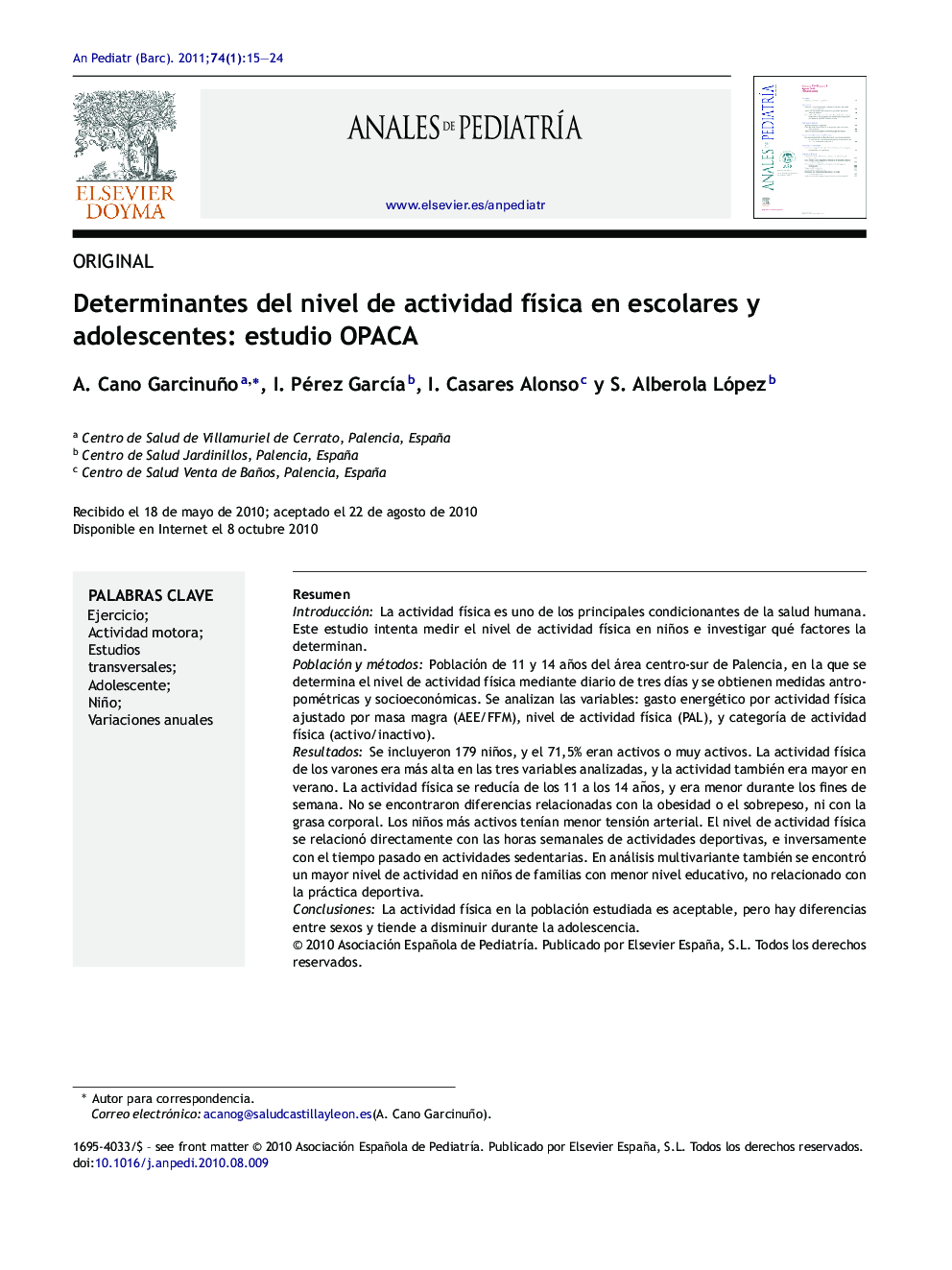| کد مقاله | کد نشریه | سال انتشار | مقاله انگلیسی | نسخه تمام متن |
|---|---|---|---|---|
| 4142683 | 1272383 | 2011 | 10 صفحه PDF | دانلود رایگان |

ResumenIntroducciónLa actividad física es uno de los principales condicionantes de la salud humana. Este estudio intenta medir el nivel de actividad física en niños e investigar qué factores la determinan.Población y métodosPoblación de 11 y 14 años del área centro-sur de Palencia, en la que se determina el nivel de actividad física mediante diario de tres días y se obtienen medidas antropométricas y socioeconómicas. Se analizan las variables: gasto energético por actividad física ajustado por masa magra (AEE/FFM), nivel de actividad física (PAL), y categoría de actividad física (activo/inactivo).ResultadosSe incluyeron 179 niños, y el 71,5% eran activos o muy activos. La actividad física de los varones era más alta en las tres variables analizadas, y la actividad también era mayor en verano. La actividad física se reducía de los 11 a los 14 años, y era menor durante los fines de semana. No se encontraron diferencias relacionadas con la obesidad o el sobrepeso, ni con la grasa corporal. Los niños más activos tenían menor tensión arterial. El nivel de actividad física se relacionó directamente con las horas semanales de actividades deportivas, e inversamente con el tiempo pasado en actividades sedentarias. En análisis multivariante también se encontró un mayor nivel de actividad en niños de familias con menor nivel educativo, no relacionado con la práctica deportiva.ConclusionesLa actividad física en la población estudiada es aceptable, pero hay diferencias entre sexos y tiende a disminuir durante la adolescencia.
IntroductionPhysical activity is a key factor for human health. This study attempts to measure the level of physical activity in children and to find out what are the factors that determine it.MethodIn a sample of the 11 and 14 year-old population of the centre-south area of Palencia, physical activity was measured using a three day diary, and anthropometric and socioeconomic variables were collected. Three variables were analysed: fat-free mass adjusted activity energy expenditure (AEE/FFM), physical activity level (PAL), and categorical physical activity (active/inactive).ResultsA total of 179 children were included, of whom 71.5% were active or very active. Males were more active than females, and activity was also higher in summer. Physical activity declined between 11 and 14 years, and was lower during the weekends than in working days. There were no differences related to obesity, overweight or percent body fat. More active children had lower blood pressure. Physical activity was directly related to weekly hours spent in sport activities, and inversely related to time spent on sedentary activities. Multivariate analysis showed that children from families with low educational levels had a higher activity level not related to sport activities.ConclusionsThe level of physical activity in this population is acceptable, although there are sex differences and there is a declining trend through the adolescence.
Journal: Anales de Pediatría - Volume 74, Issue 1, January 2011, Pages 15–24